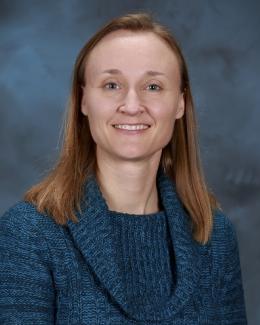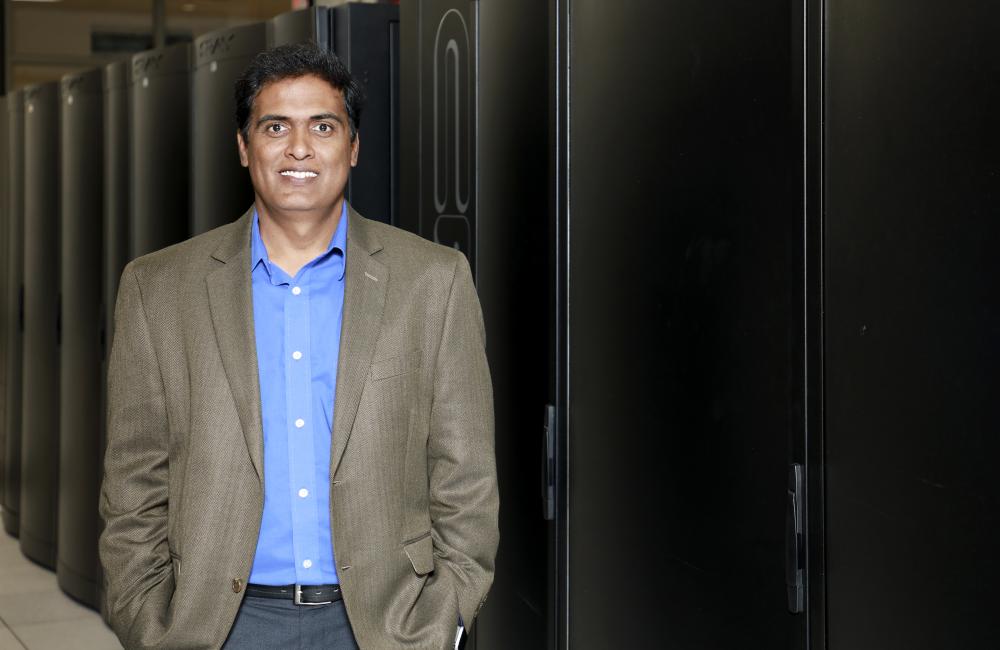Giri Prakash of Oak Ridge National Laboratory deftly draws on his expertise as a computational and environmental scientist to guide the translation and accessibility of big data about Earth’s atmosphere for eager researchers around the world.
As the data center director for the Atmospheric Radiation Measurement (ARM) user facility, Prakash manages a multi-laboratory team in the collection and delivery of global meteorological data for this DOE Office of Science user facility.
“I’ve never had a dull day,” Prakash said of the hive of activity he heads. And he wouldn’t have it any other way.
Information continuously streams into the data management system at ORNL from millions of atmospheric measurements taken on the ground, by air, and via ship. Instruments aboard the Aurora Australis capture data from the Southern Ocean while sailing a circuit between Tasmania and Antarctica. Sensors from the Americas to the Azores are busily measuring phenomena such as sunlight, cloud characteristics, and particles in the air. These factors influence global temperatures, weather patterns, and environmental systems that sustain life on earth.
Managing the sheer volume of these data—with some measurements taken every 10 seconds, more than 11,000 data products to maintain, and about a petabyte of new information generated each year—could be daunting. But Prakash thrives on the challenge.
Powering up
Prakash realized a few years ago that some datasets were becoming too large for use on a personal computer. He tapped into the leadership computing resources at ORNL to add computing clusters to ARM’s menu of services, allowing scientists to access the data they need along with the computational power to analyze it.
“I didn’t reinvent the wheel,” Prakash said. “I partnered with the experts down the hall. It’s a natural fit for ORNL to be a leader in facilitating open science through high-performance computing.”
Two computing clusters, aptly named Cumulus and Stratus, are now available for use through the ARM user facility. Prakash and his team also responded to feedback from scientists by pioneering a novel way to cite ever-evolving datasets with precision. These are just a couple of the continual improvements Prakash has led since he started at ORNL as a post-master’s associate in 2002.
Among his first assignments at Oak Ridge, Prakash drove the development of the ARM Data Discovery tool, a customer interface for scientists seeking data. He brought some unusual experience to bear on the project.
Driving data discovery
What does car shopping have to do with atmospheric science? For Prakash, the two topics formed a seamless avenue between his previous job developing software for shoppers to custom-order luxury vehicles and his new assignment creating a portal to access an array of scientific datasets. The websites had similar goals in fostering easy selection and acquisition.
Except for that detour into the corporate world, Prakash’s career has been focused on the environmental sciences. He secured a bachelor’s degree in agriculture at Tamil Nadu Agricultural University in Coimbatore, India, followed immediately by his first master’s degree in soil science—where he used remote sensing data from the Indian space agency in his studies.
His curiosity and love of knowledge took Prakash to Memorial University in Newfoundland next, where he attained a master’s degree in environmental science while studying the heavy metals seeping into the Atlantic Ocean from World War I debris. Computational modeling was key to his research, and Prakash got hooked on computing. He went to the University of Calgary, Canada, to explore the topic and obtained a diploma in software technology.
Prakash feels fortunate, he says, to have found a position at ORNL that challenges him to use all of his experience and skills in the service of the environment and the scientific community.
Learning and travelling remain constants in Prakash’s career. He recently journeyed to Brazil to share tips with scientists on how to access ARM data products from a campaign that measured how air-borne particles from cities migrate to the Amazon rainforest. Similar scientific campaigns examined the effects of air-borne particles on regional atmospheric conditions in China and Africa.
Amid his studies, Prakash spends time with family. Prakash and his wife were newlyweds when he first started at ORNL, and they made their first home together in Knoxville. A couple of happy decades later, Prakash enjoys coaching baseball for their two sons and playing cricket with friends.
His passion for coaching extends to mentoring early career scientists on his team. “One of the things I like is giving them the same fire I had when I started at ORNL,” Prakash says.
ORNL is managed by UT-Battelle for the Department of Energy's Office of Science, the single largest supporter of basic research in the physical sciences in the United States. DOE’s Office of Science is working to address some of the most pressing challenges of our time. For more information, please visit http://energy.gov/science.



